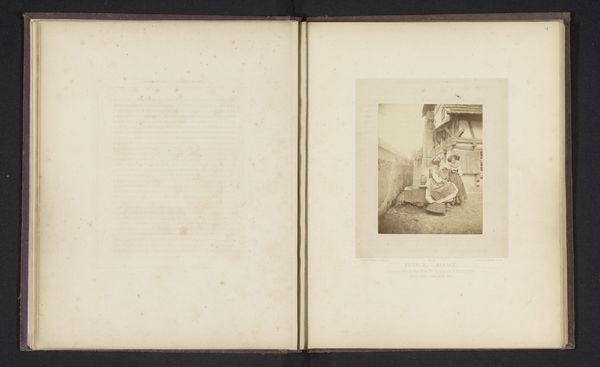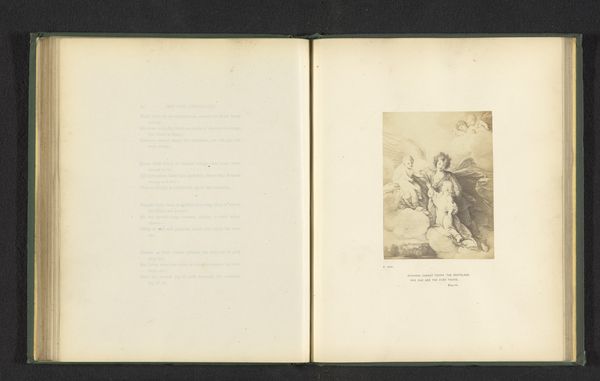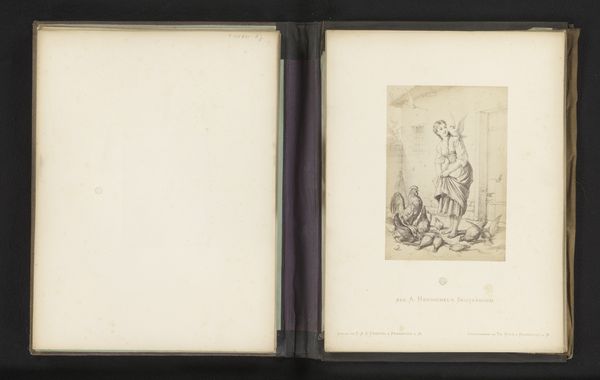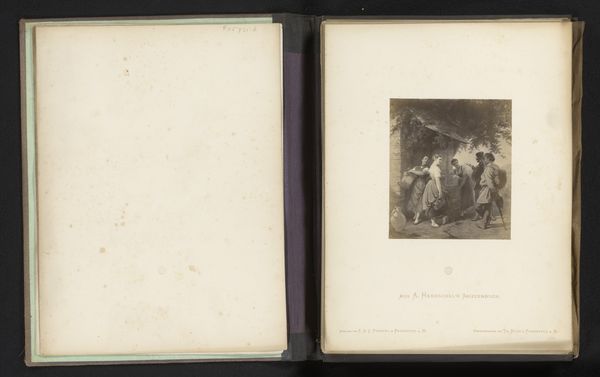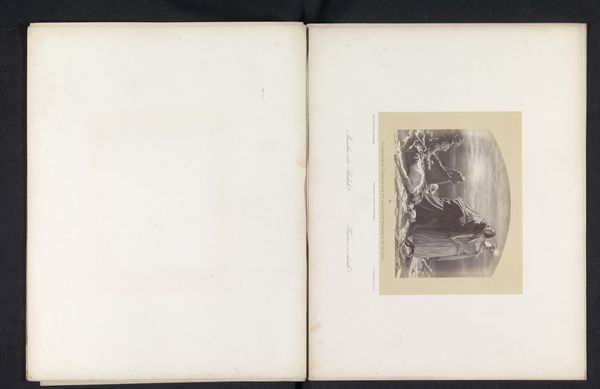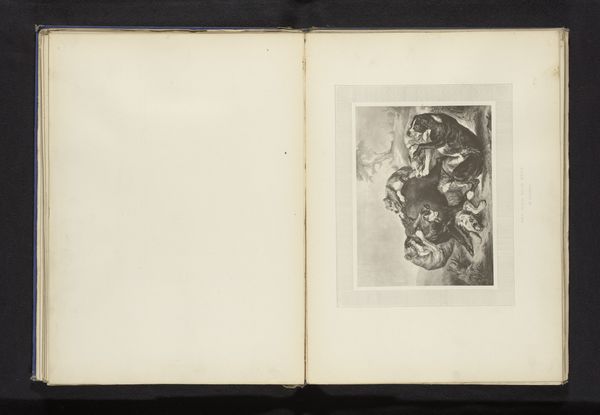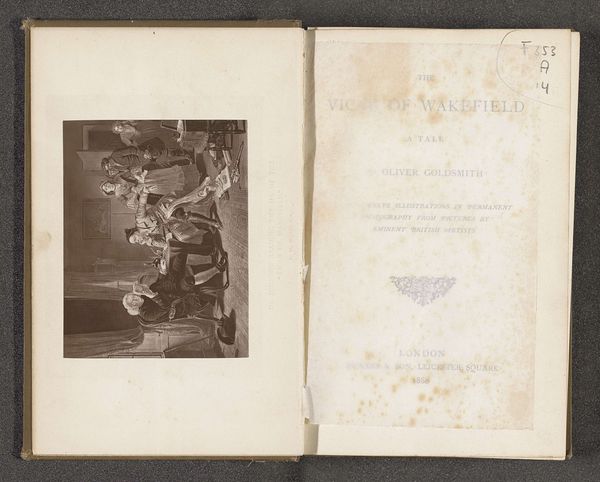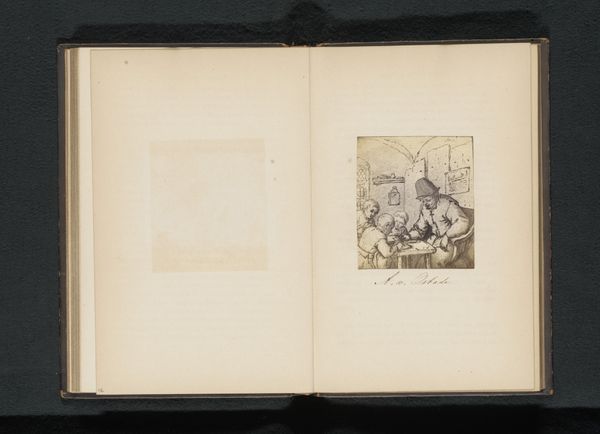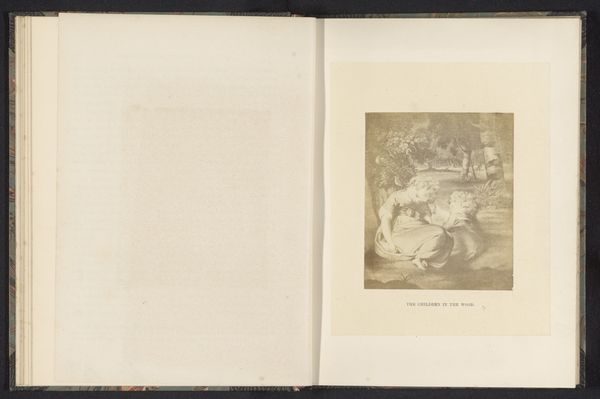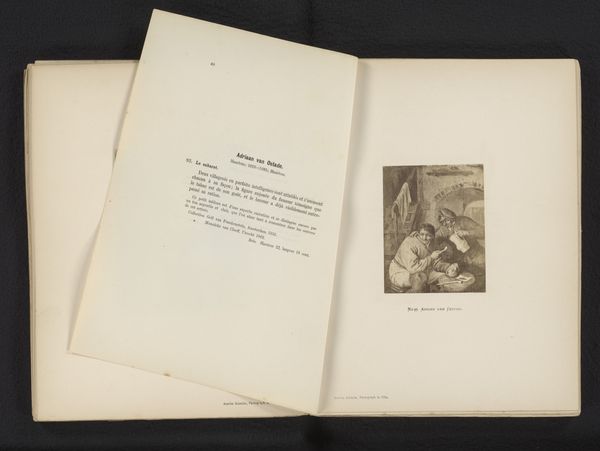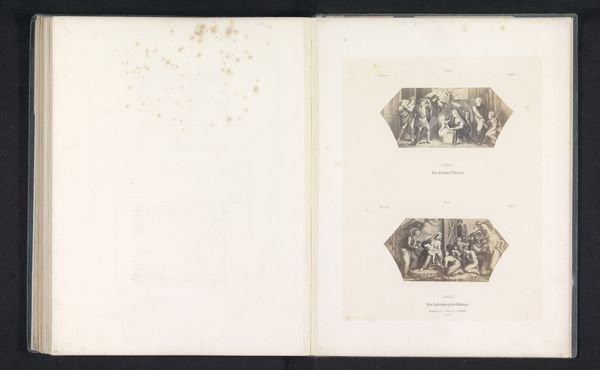
Fotoreproductie van een prent naar een karton voor een tapijt van de Wonderbare visvangst door Rafaël before 1861
0:00
0:00
print, etching, paper, engraving
# print
#
etching
#
paper
#
11_renaissance
#
history-painting
#
engraving
Dimensions: height 138 mm, width 179 mm
Copyright: Rijks Museum: Open Domain
Editor: So, this is a reproduction of a print, made before 1861 by Gustav Schauer, based on Raphael's "Miraculous Draft of Fishes". The print itself is an etching and engraving on paper. What strikes me is how this piece, being a reproduction, attempts to circulate and perhaps even democratize access to a monumental artwork, one originally destined as a tapestry for the Sistine Chapel. What can you tell us about this print and its historical context? Curator: That's a very astute observation. Reproductions like these played a vital role in disseminating art beyond elite circles. Consider that tapestry's original location—the Vatican, a place of immense power and authority. Schauer's print allows the “Miraculous Draft” narrative to travel and be consumed in different social settings, even domestic ones. This speaks to the 19th-century project of art education and nation-building. Editor: So, you're saying that circulating images like these helped promote certain values? What would those values be, in the case of this print, referencing such a significant historical event? Curator: Precisely. The story of the miraculous catch is about faith, obedience, and divine reward. But beyond the overt religious narrative, think about what it visually signifies within 19th century social-political frameworks. We observe a clear hierarchy between Christ and his followers. It subtly reinforced prevailing notions of leadership, class, and social order, subtly shaping public opinion about power dynamics during this period of great political unrest in Europe. Where would you see it circulating? Editor: I suppose that's what is intriguing; seeing this in book form suggests a didactic or instructive purpose, like an effort in religious teaching through accessible imagery. Curator: Absolutely, and that is also how such art shapes taste; disseminating artistic concepts that subtly become established "truths". It truly sheds new light on our interpretation of art in civic life, and how politics and religious art can coexist to establish dominance. Editor: This gives me a fresh perspective. I see how art functions as not only aesthetic delight, but also as cultural reinforcement, often reflecting sociopolitical motives, that prints like these make much more easily amplified and propagated!
Comments
No comments
Be the first to comment and join the conversation on the ultimate creative platform.
